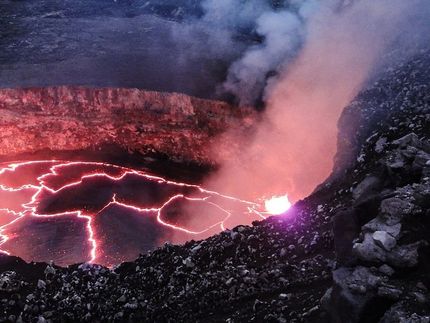Searching for the metabolic chemistry of early life
To better understand the emergence of life, former SFI Omidyar Fellow Rogier Braakman and External Professor Eric Smith are taking a careful look at Aquifex aeolicus.
Being restricted to extreme, boiling hot spring habitats (a consistent feature of Earth’s geology) means the unusual bacterium’s metabolic network has evolved less than those of other species. This makes it a great model system to study the early evolution of metabolism, the researchers say.
The pair is using a technique called phylometabolic analysis, which combines the building of gene-based family trees of relatedness (called phylogenies) with reconstruction of chemical metabolic networks. This lets the researchers “see not just what information is changing, but how specific driving forces are changing the underlying chemical networks encoded by those genes," explains Braakman.
Their research, published in PLOS ONE, highlights three main drivers of evolution: optimizing kinetics, either by replacing generalist enzymes with multiple, specialized enzymes or by fusing successive enzymes in a pathway together to minimize diffusion; and optimizing thermodynamics by choosing pathways that use less energy. These drivers, they say, evoke a major tradeoff in evolution – speed versus efficiency – and suggest that early ancestors probably started with a smaller assortment of enzymes, each of which could weakly catalyze many different reactions.
By identifying how the chemical subsystems of metabolism have changed, researchers might infer phenotypic features of the universal common ancestor, notes Braakman, and even link the competition for resources across different branches of the tree of life to the evolution of the major elemental cycles in the biosphere.
Most read news
Organizations
Other news from the department science

Get the chemical industry in your inbox
From now on, don't miss a thing: Our newsletter for the chemical industry, analytics, lab technology and process engineering brings you up to date every Tuesday and Thursday. The latest industry news, product highlights and innovations - compact and easy to understand in your inbox. Researched by us so you don't have to.








![[Fe]-hydrogenase catalysis visualized using para-hydrogen-enhanced nuclear magnetic resonance spectroscopy](https://img.chemie.de/Portal/News/675fd46b9b54f_sBuG8s4sS.png?tr=w-712,h-534,cm-extract,x-0,y-16:n-xl)















































